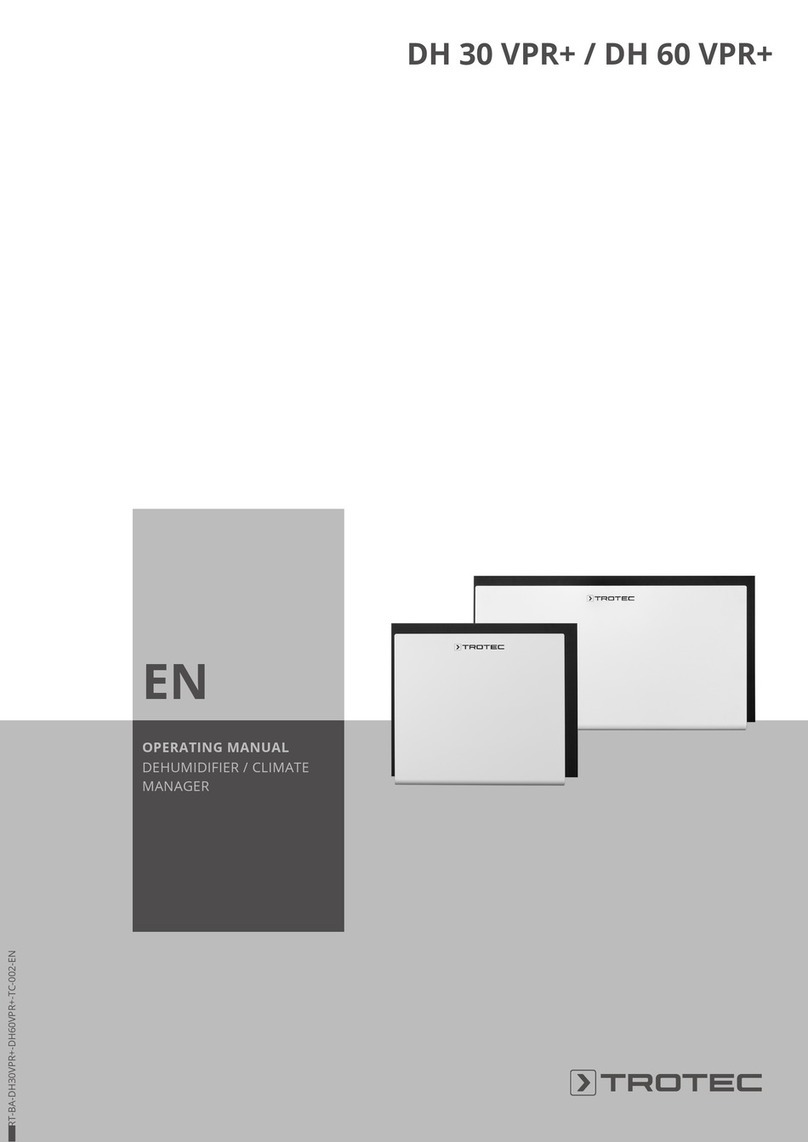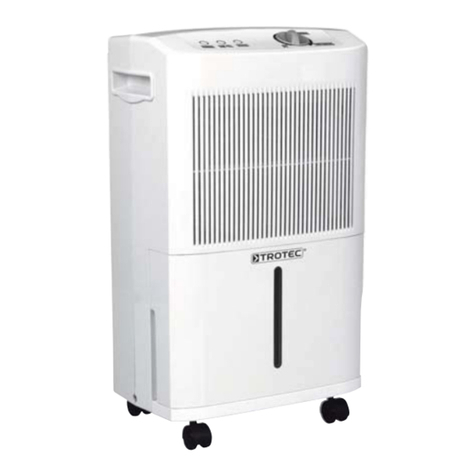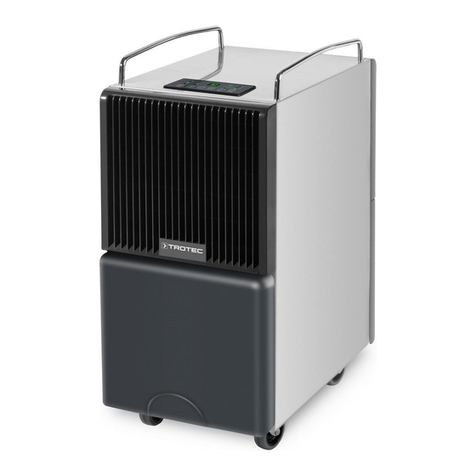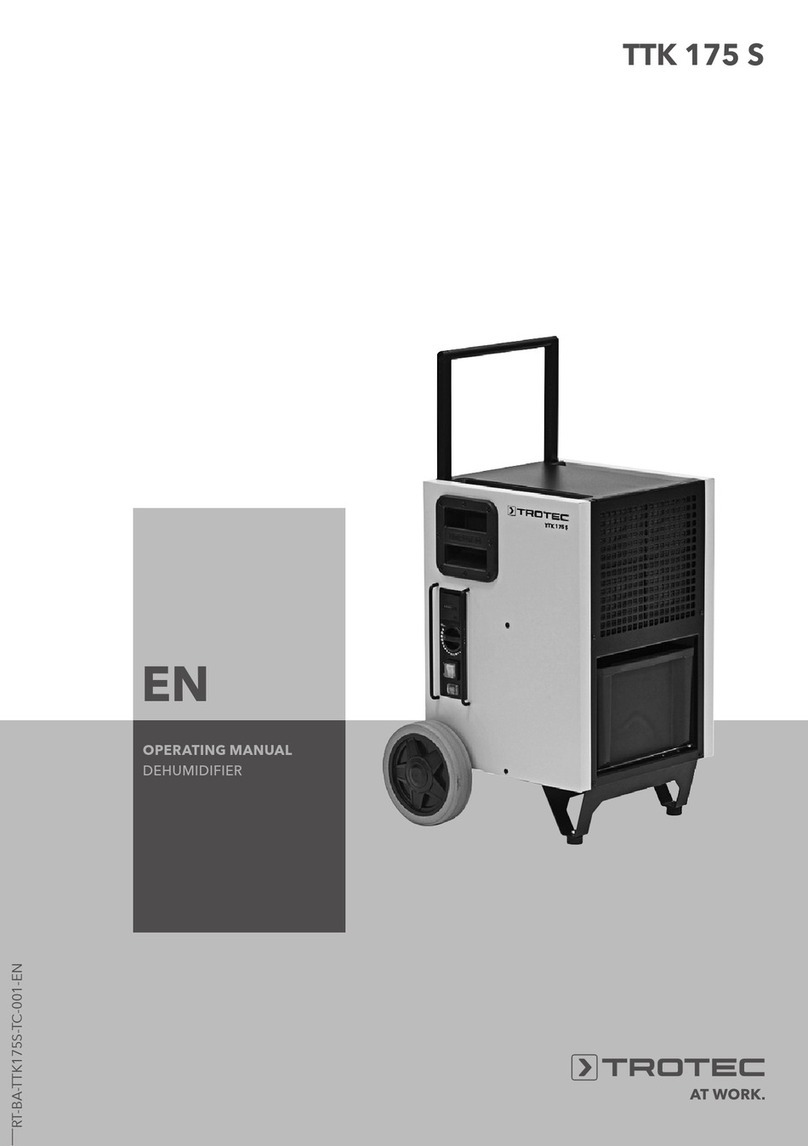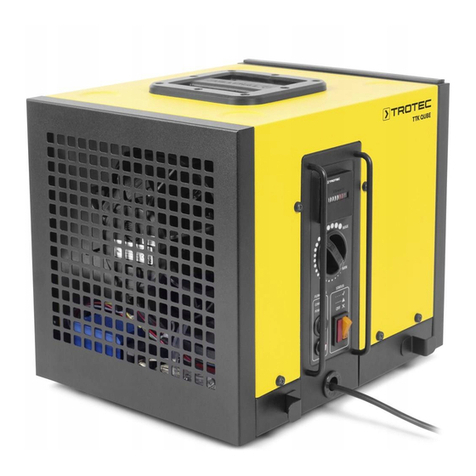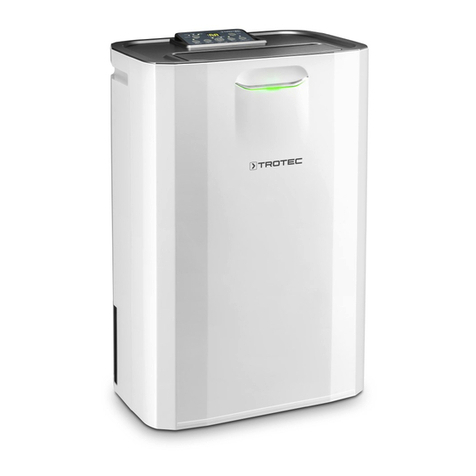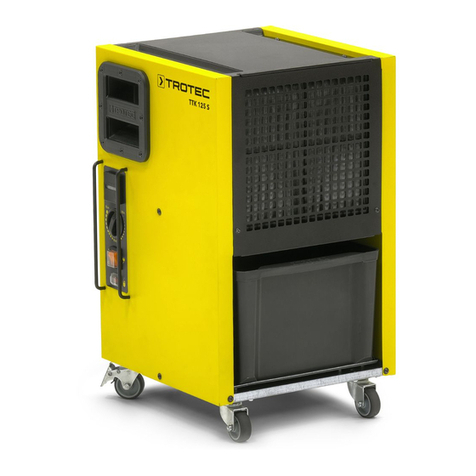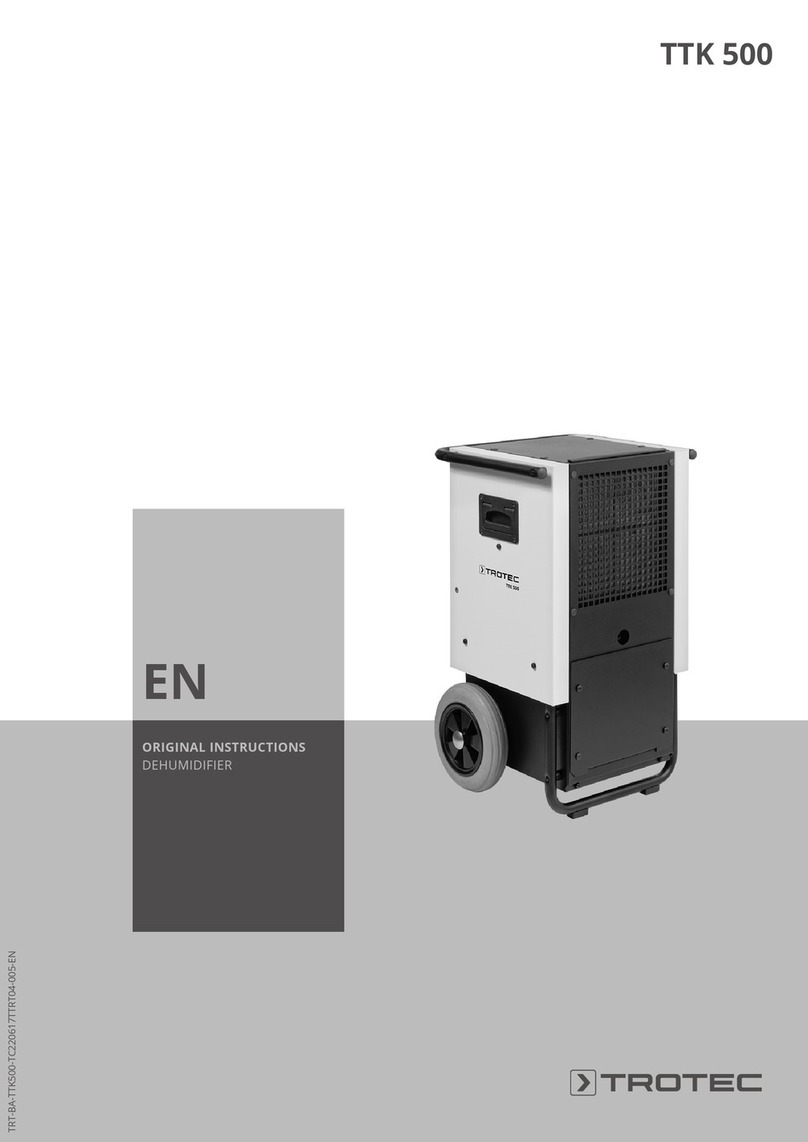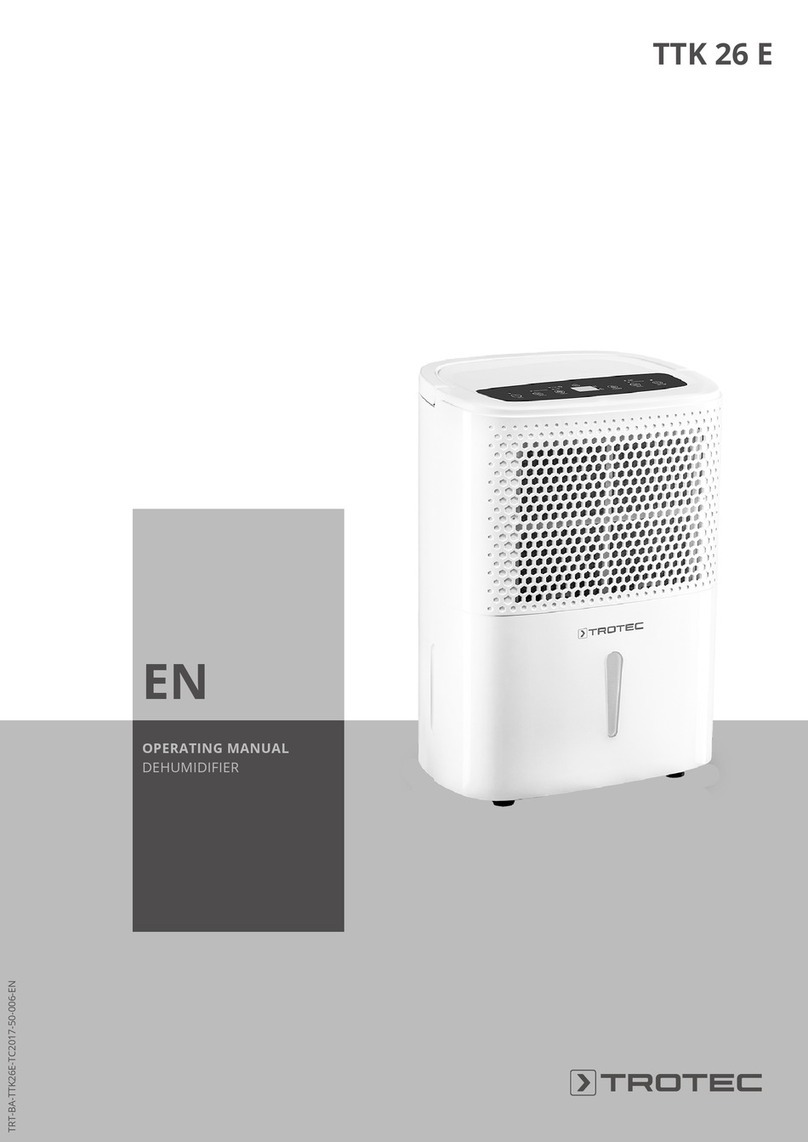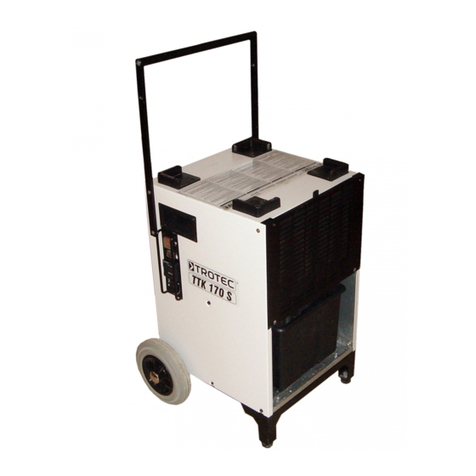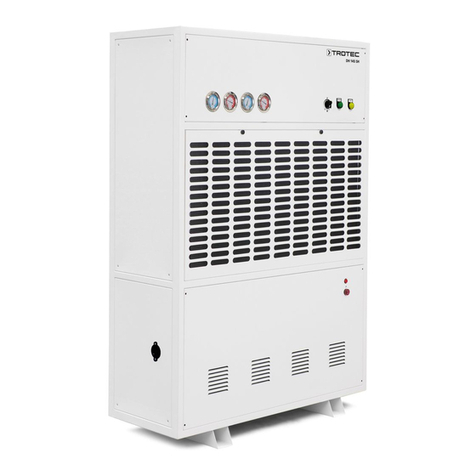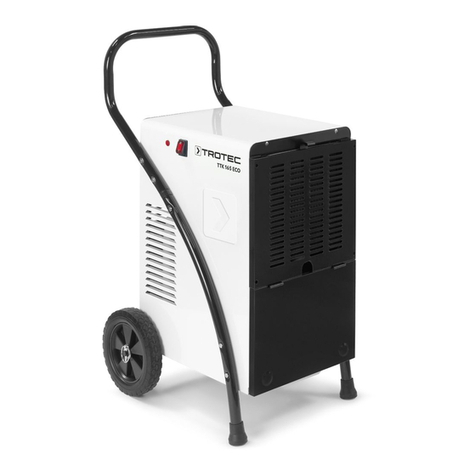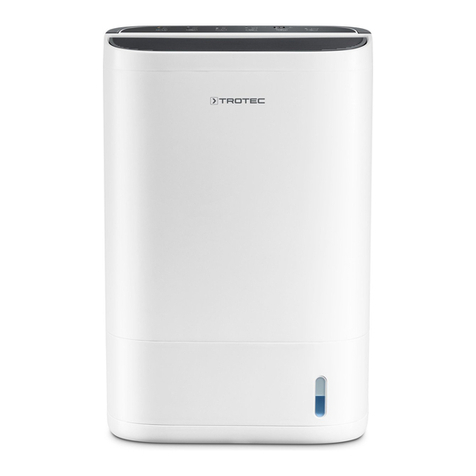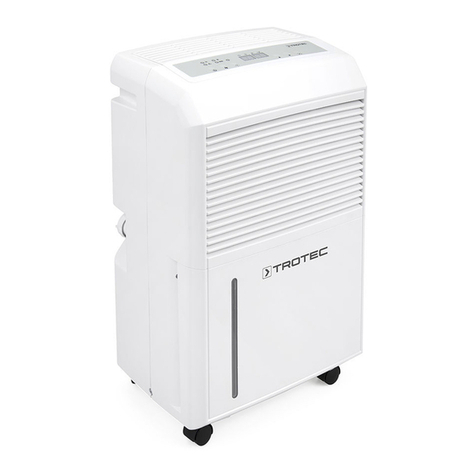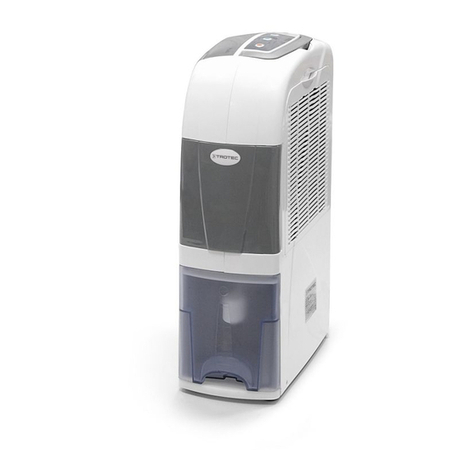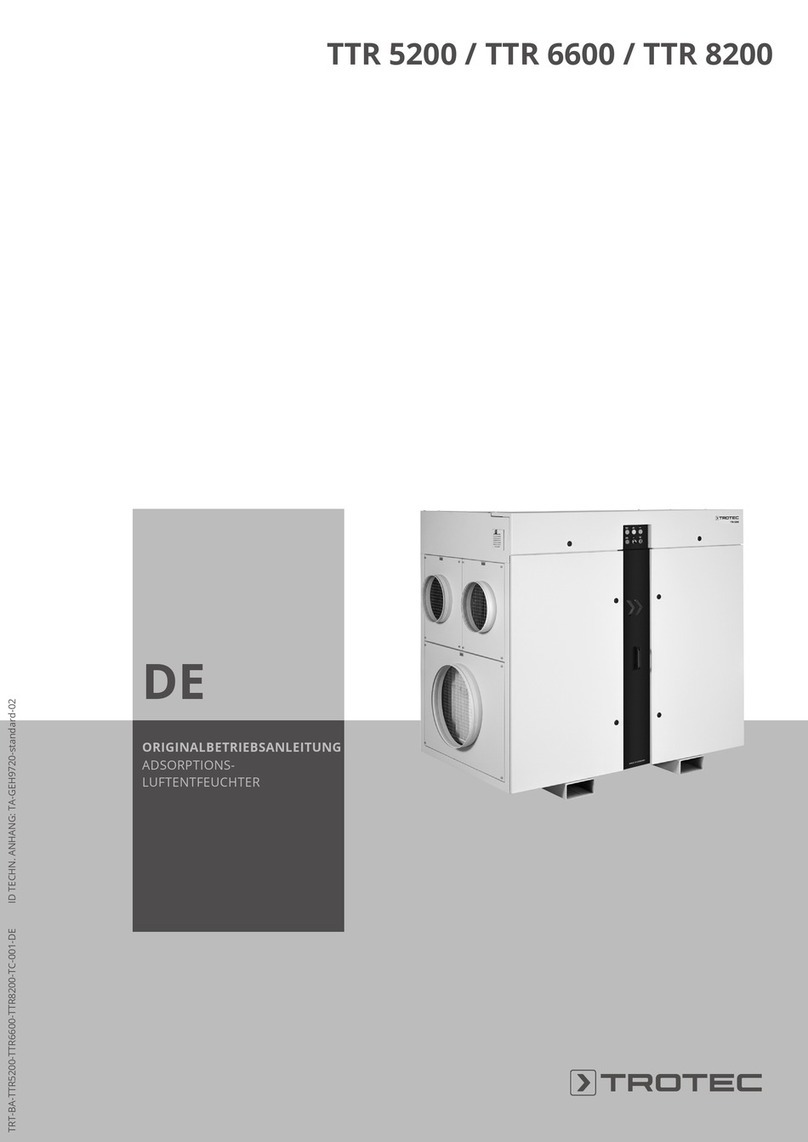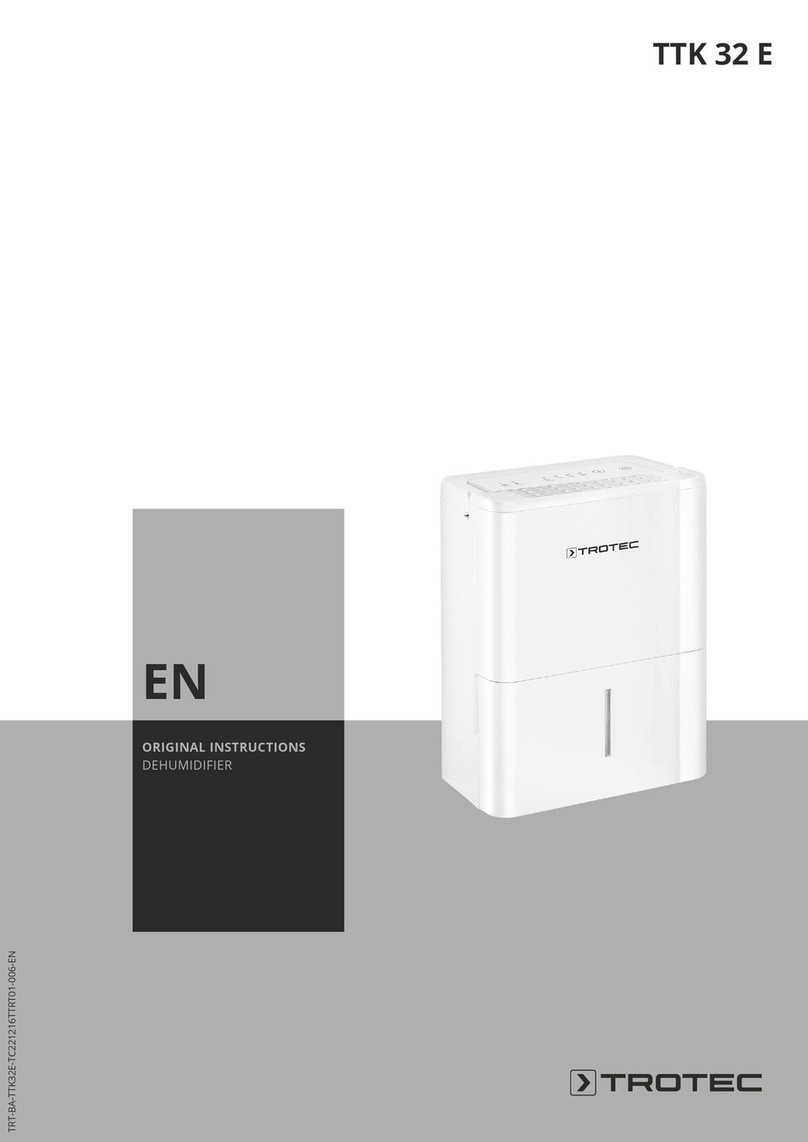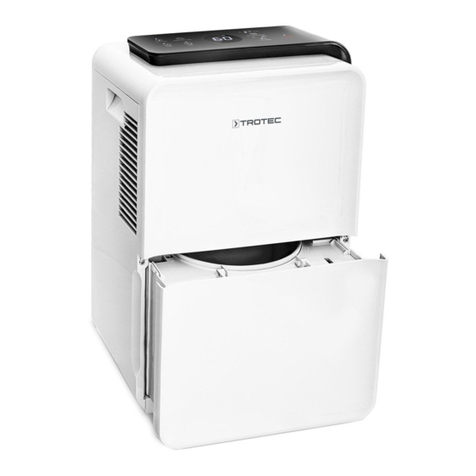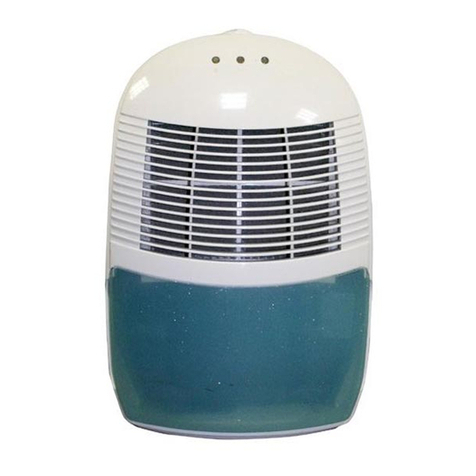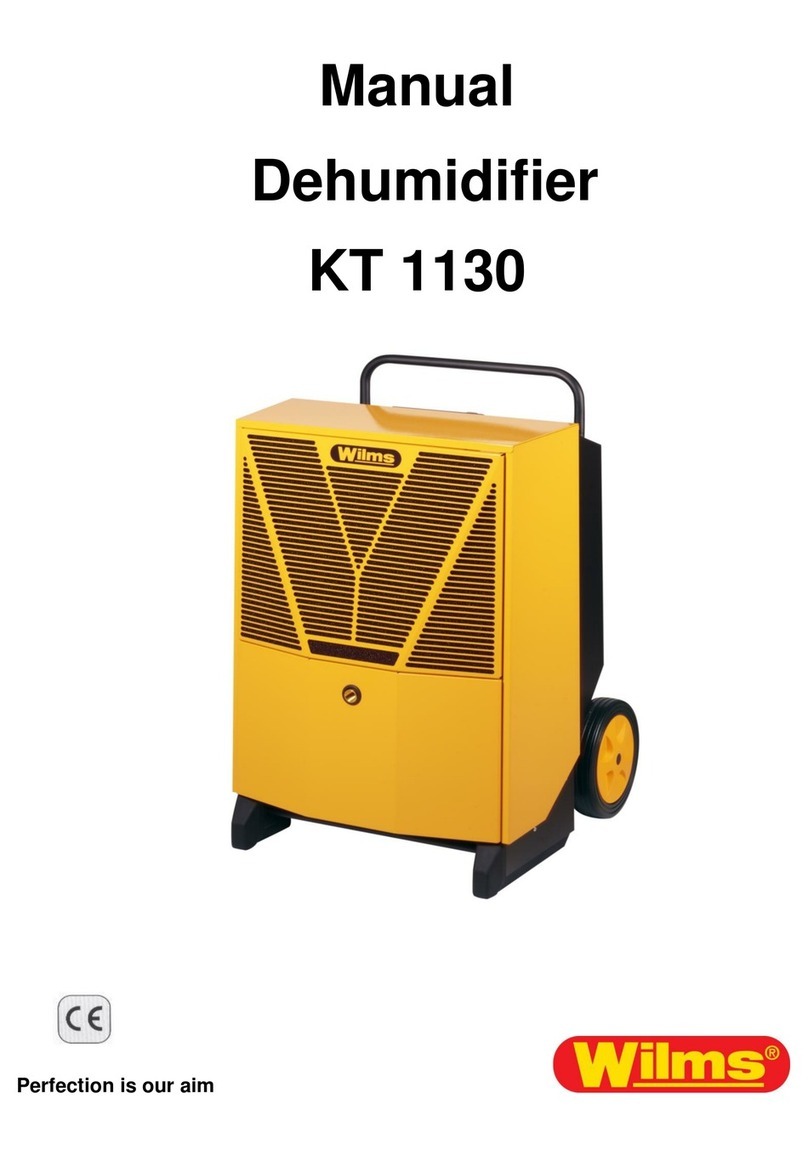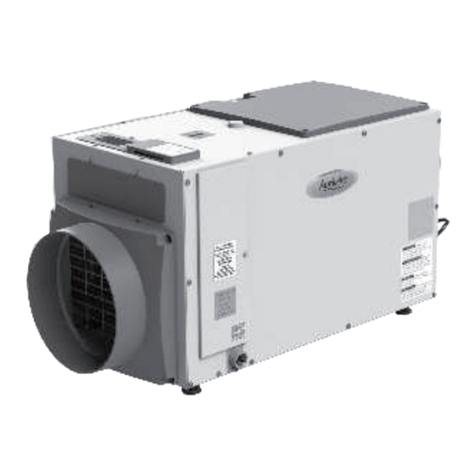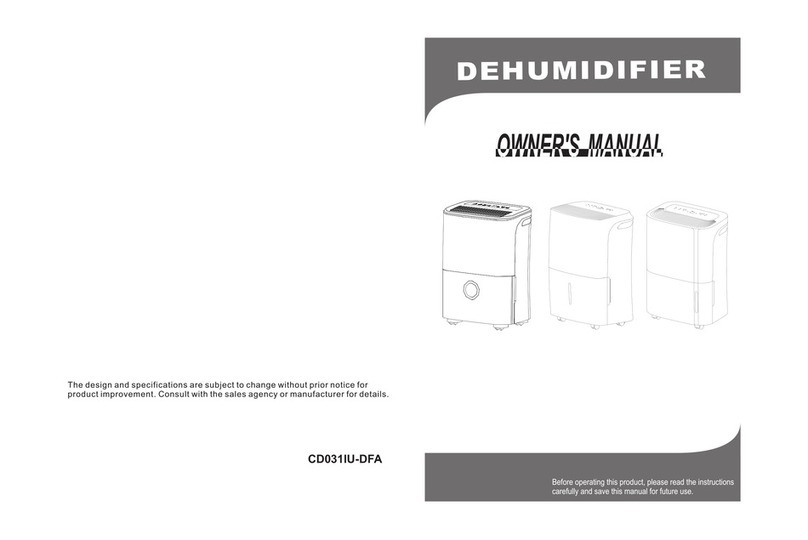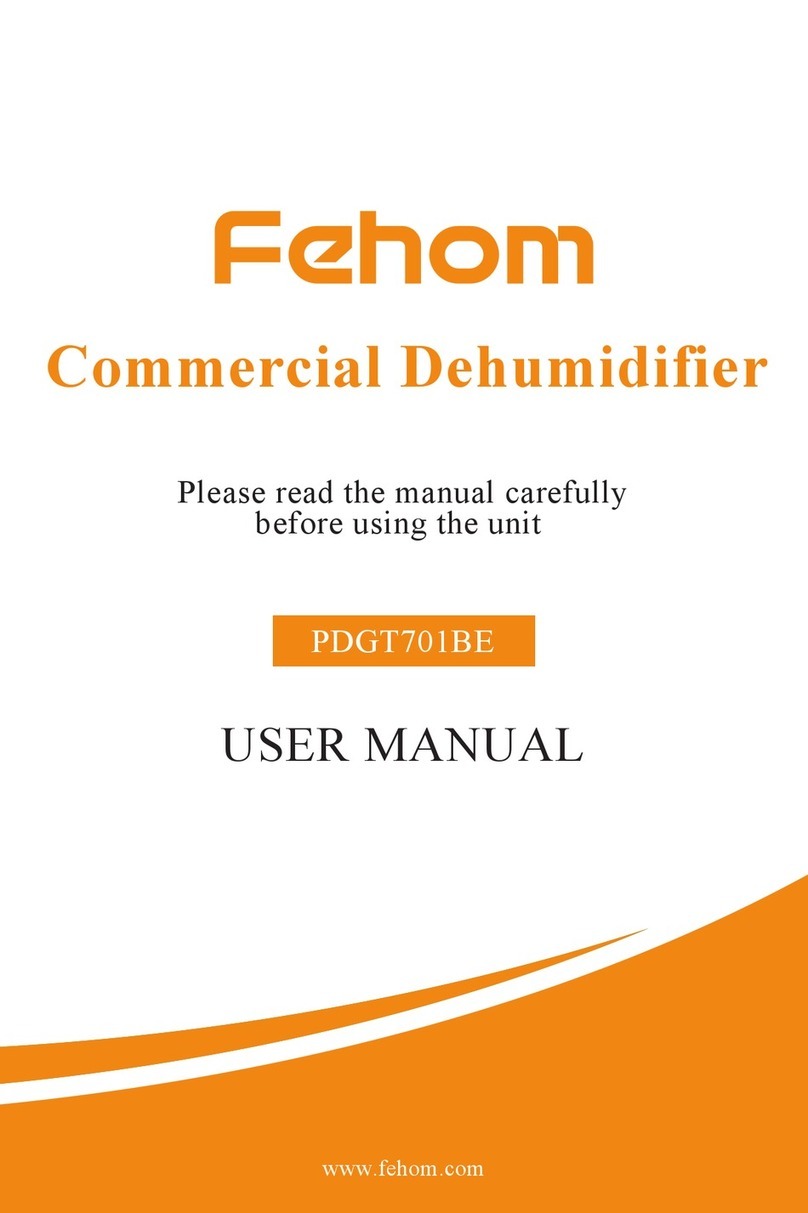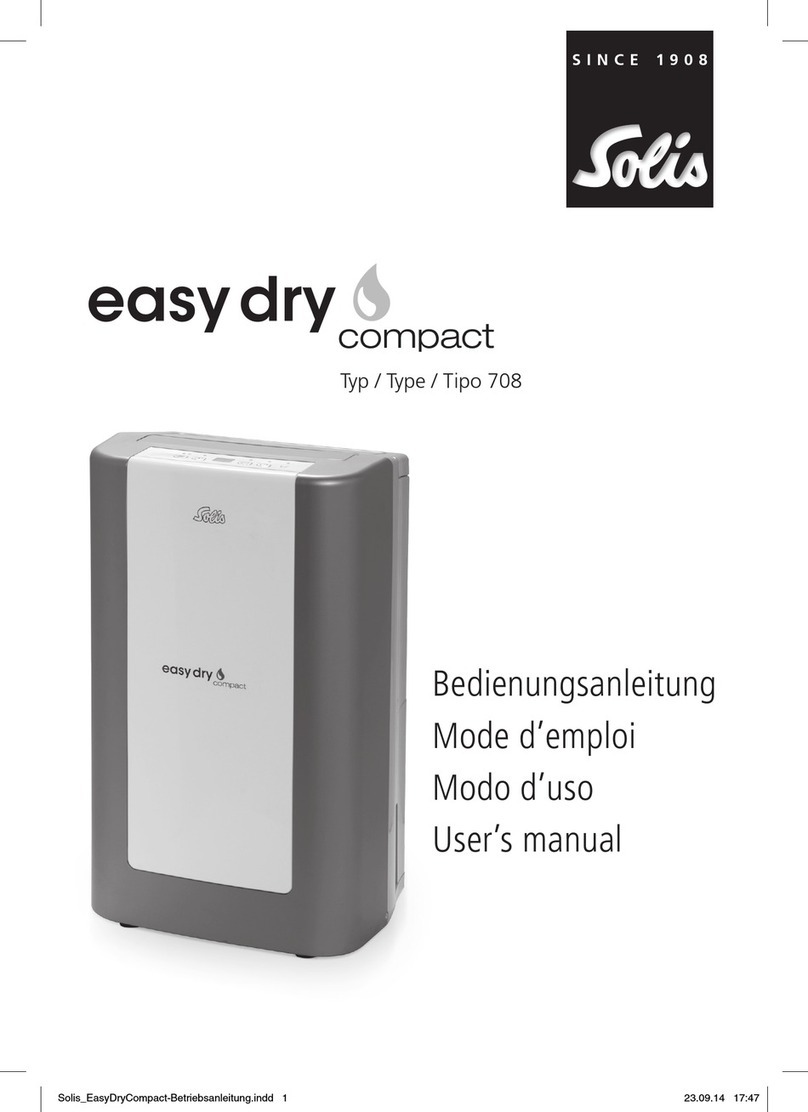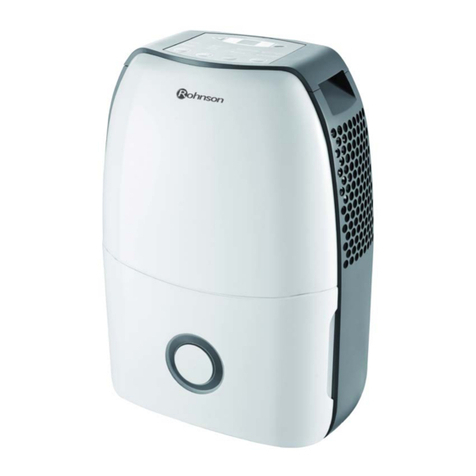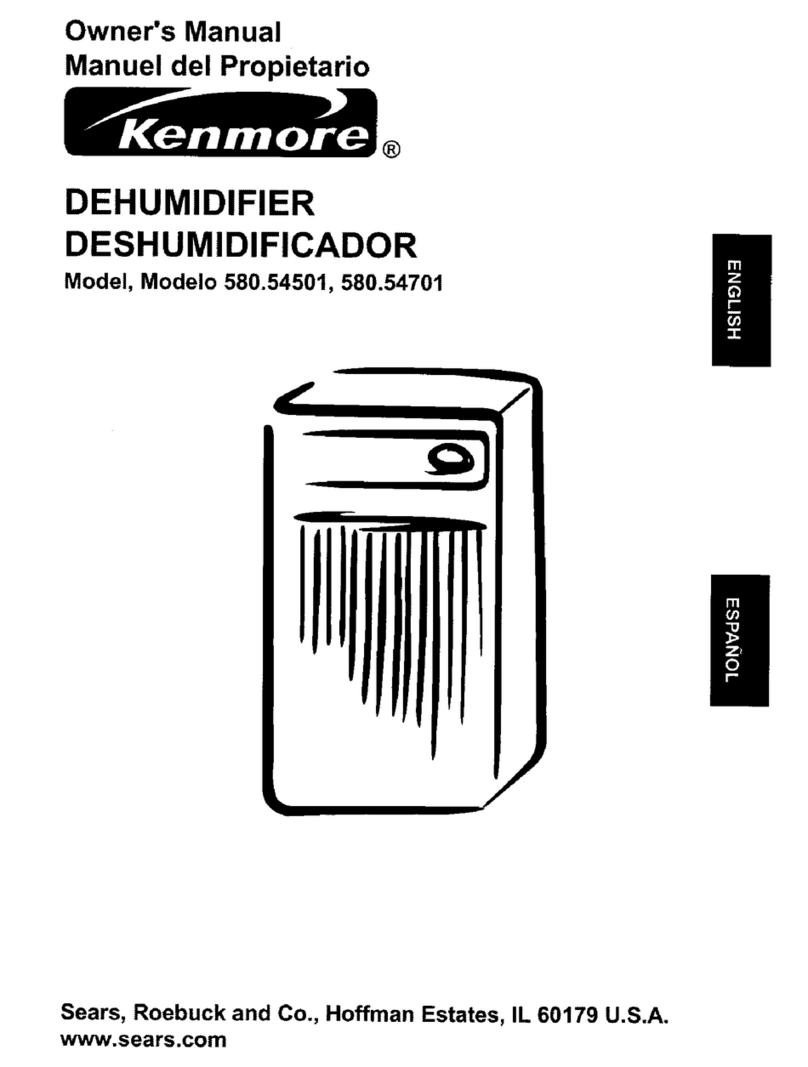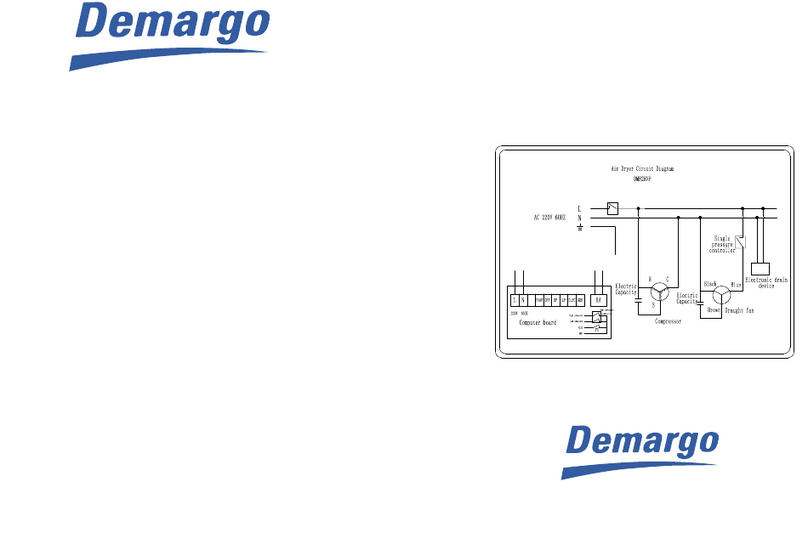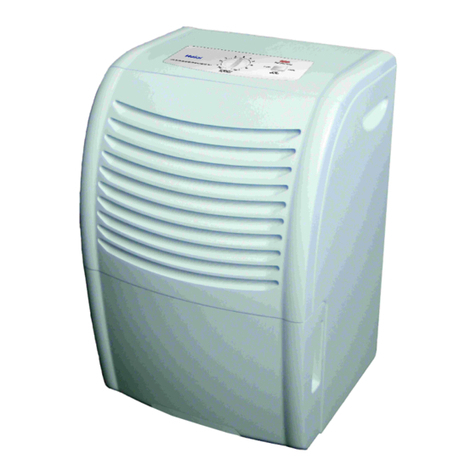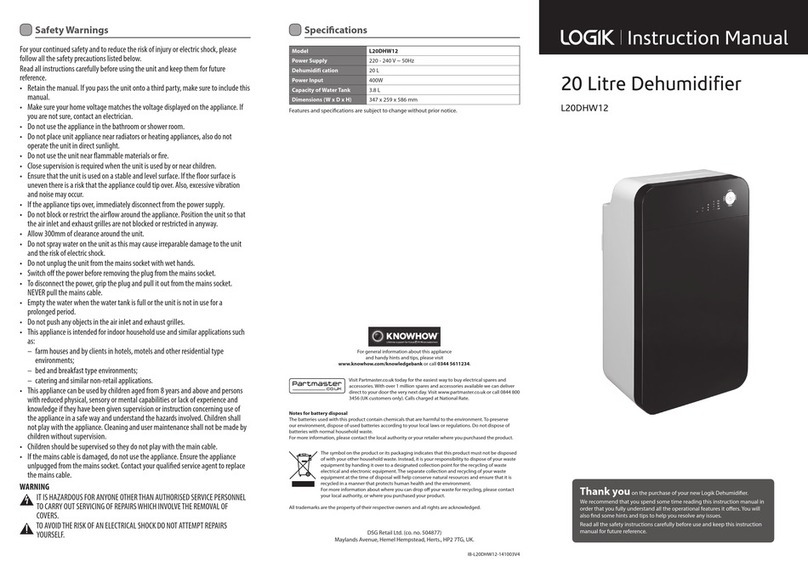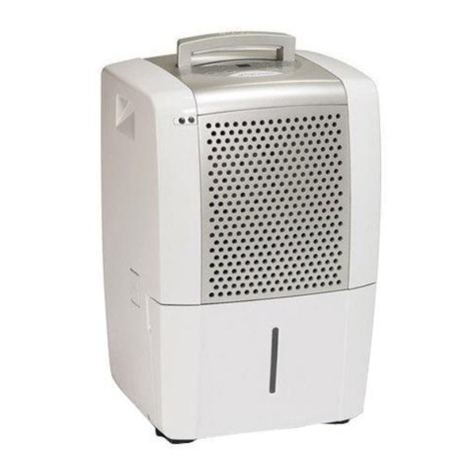
6EN
User instructions – Adsorption dehumidifier TTR 400/400D/500D
operation may only be performed by a trained electrician. If necessary,
please contact the Trotec customer service.
Air volume adjustment
The fan speeds can be adjusted at the speed controllers (7) and (8). Turn
the appropriate controller to the right to increase the air volume and to
the left to decrease it.
10. Transport and storage
Transport
Caution!
Damage to device due to vibrations.
Strong vibrations can cause damage to the device.
When transporting the device, protect it from exces-
sive shocks, e.g. by rough handling or dropping.
During transport, always secure the device against
slipping.
Lift and carry the device only by using the provided
means.
Storage
Store the device in a dry place where it is protected from adverse weather
effects.
Choose a storage location that is free of dust.
Always disconnect the device from the mains supply when it is not in use.
Up to 4 devices can be stacked in a space-saving way.
Always secure stacked devices against tipping.
11. Care and maintenance
Care
The housing surface of the device comes with a low-maintenance pow-
der coating. This decreases the adhesion of dirt and enables cleaning
with a damp piece of cloth.
Cleaning of the interior and the integrated components may only be car-
ried out by trained personnel or the Trotec customer service.
Caution!
Damage to the device due to improper cleaning.
The interior of the device must only be cleaned with
a damp cloth or pressurised air. Do not let any liquids
enter the device!
Maintenance
Trotec dehumidifiers are designed for long operating hours with low
maintenance requirements. To ensure safe operation of the device, all in-
tegrated components must be checked and cleaned or replaced at least
once every 6 months or 4,000 operating hours if necessary.
upstream of the fan. However, this leads to an unnecessary and often
considerable increase in noise and energy consumption.
This device is equipped with a variable-speed high performance fan
for each air stream to supply the nominal drying and regeneration air
flows at maximum speed with connected air hoses (each approx. 10m
long).
Additionally, the device features a heating unit generating heat by means
of ceramic PTC semiconductor components to heat the regeneration air.
These elements generate and keep a maximum surface temperature of
approx. 240 °C. The temperature-dependent resistance, which increases
quickly with decreasing heat distribution under a certain value (Curie
temperature), leads to a self-regulating effect of the heating power con-
sumption, i.e. in case of an increase in air temperature and/or decrease
in air volume, the power consumption decreases (and vice versa). Ad-
ditionally, destruction of the device by overheating, e.g. due to a lack in
regeneration air, can be excluded.
To achieve minimum humidity outlet at minimum drying air or maxi-
mum dehumidification performance at maximum drying air, it is cru-
cial to appropriately adjust the volume of regeneration air. The air volume
must be adjusted until the value defined as optimum heating flow is
displayed at the ampere meter.
For all other applications with low requirements placed on the dehumidi-
fication performance and drying air volume, the speed of the fan can be
reduced until the value defined as minimum heating flow is displayed
at the ampere meter. This way, very good dehumidification results can be
achieved at minimum energy consumption.
9. Operation
Switching the device on
The device can be switched on at the power switch (6). The integrated
control indicator will light up.
Switching the device off
The device can be switched off at the power switch (6). The integrated
control indicator will go out.
Remote operation
The device can be switched on at the power switch (6). The integrated
control indicator will light up.
Use the respective Tuchel plug (optional accessory) to connect an exter-
nal switch or control unit, e.g. hygrostat or timer, to the connection sock-
et. Please strictly follow the information in the attached circuit diagram!
If necessary, all electrical actuators can now be switched on or off by
means of the external switch. The control indicator on the power switch
keeps flashing irrespectively of the switching position and indicates that
the control system is activated.
In hygrostat operation, it may be necessary to provide air circulation at
the humidity detection position. In this case, the fan can be configured for
permanent operation by repositioning a plug at the integrated relay. This
